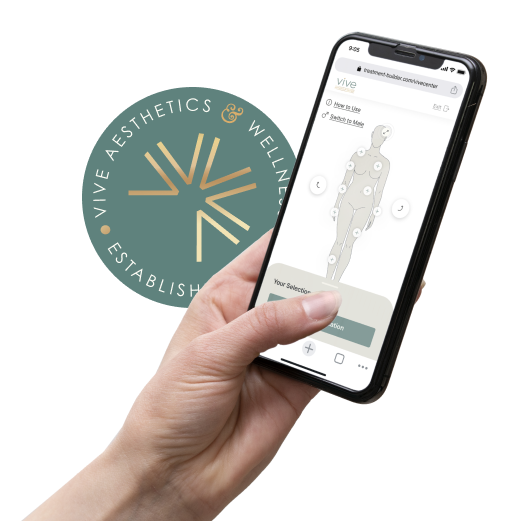
To start this new feature to our website I thought I’d begin with some of the science behind what happens to our bodies after we eat and how we become either overweight, metabolically unhealthy, or both. Also, what does it really mean to be obese in regards to our cardiovascular health?
What came first…obesity or insulin resistance?
The Framingham Heart Study (the study that is looked as the mother of all studies when it comes to cardiovascular health) demonstrated that OBESITY is an independent risk factor for cardiovascular disease in both men and women. However, more recent research has shown that this might not be the case per se. Rather, the insulin resistance that develops as a consequence of obesity, particularly visceral obesity (the fat in our belly and around our organs), is likely the major driving force for the development of cardiovascular disease. This insulin resistance is an important player in the development of both metabolic syndrome and type 2 diabetes, both of which are rising (and have been rising) exponentially.
Insulin resistance, what is that?
Well, let me take a step back and first explain what insulin is. Insulin is a hormone released by cells in the pancreas called beta cells. It makes our body’s cells absorb glucose from the blood. The glucose is stored in the liver and muscle as glycogen or converted to triglycerides and stored in our fat cells. More importantly however, it stops the body from using fat as a source of energy. In other words, insulin prevents the breakdown of fat and increases the storage of fat. Those LOW FAT cookies which are actually higher in carbohydrates (glucose or sugar) cause insulin levels to rise which means most of the calories from those cookies will be stored as fat. Not so LOW FAT any more, are they? When there is very little insulin in the blood or none at all, our body uses dietary fat or stored fat as a source of energy. What that means is, eating protein and fat, or carbohydrates that don’t cause a great rise in blood glucose (like whole vegetables and fruits), will not signal the body to store fat, and instead tell the body to use fat. When your insulin levels are always high the body starts to ignore it. Think of insulin as the little boy who cried wolf. After enough false alarms, the towns people ignored the boy and then the wolf ate him. With insulin, our body tunes out the insulin and then when it’s really needed it doesn’t work as well. This causes the secretion of more insulin, which then causes more resistance. It’s a cycle you do not want to be caught up in. At some point, you start to have chronically elevated blood glucose levels and develop metabolic syndrome. This will lead to type 2 diabetes and the prescription for a pill to lower your blood sugar (diabetic medication) such as metformin. Eventually the pancreas can’t keep up with production of insulin and starts to fail. When this happens, your doctor will likely need to start you on daily insulin injections. To make matters worse, if you still don’t alter your diet to be lower in sugar and starchy carbohydrates, you will need more insulin due to your body’s resistance…and more insulin means more body fat. This is why the average patient gains weight once started on insulin.
What are triglycerides?
Your fat cells (adipocytes) serve an important role as an energy reservoir. We store the fat in little packages called triglycerides (yep, the same ones your doctor told you were high on your last blood test). When energy is needed, the fatty acids in the triglycerides are liberated by hormone-sensitive lipase (HSL). When you are fasting, these fatty acids that are released can be used as fuel for your body. After you eat, especially a high carbohydrate (sugary or starchy meal), insulin levels rise and bind to the insulin receptor on your fat cell and prevent the HSL from working, therefore no fuel is released from your fat cells. In other words, you burn NO fat.
The fat cell releases several hormones
Fat cells also secrete other hormones that help control your appetite and keep your body sensitive to insulin. But, when you have too many fat cells, you start to develop resistance to these other hormones as well. It never ends does it? One of those hormones, Leptin, tells our brain to stop eating. If you develop leptin resistance (just like insulin resistance) your brain doesn’t recognize you are full and you are always hungry. Patients with a true Leptin deficiency are always hungry and will eat themselves to death. Thankfully, this is a rare genetic disease.
What does insulin resistance do to me?
As fat cells continue to fill up with triglycerides, they become even more dysfunctional, leading to more insulin resistance. They also cause an increase in systemic inflammation (the real culprit) leading to further insulin resistance. So what does all this mean? How does insulin resistance hurt me? Well, insulin resistance wreaks havoc all over the place. The following are some of the effects on our body:
- hyperglycemia (high sugar levels)
- hypertension (high blood pressure)
- dyslipidemia (high levels of bad cholesterol and triglycerides and low levels of good cholesterol)
- visceral organ steatosis (fatty heart, liver, pancreas, and skeletal muscle)
- endothelial cell dysfunction (damaged blood vessels)
- increased systemic inflammation (worsening of arthritis and other auto-immune disease)
- pro-thrombotic and pro-oxidative state (meaning, more likely to have a blood clot and more likely to have damage of your healthy cells)
How do I fix this?
Sounds horrible and it is. What does all this mean though? Well, if you have insulin resistance you are vulnerable to accelerated atherosclerosis and have increased risk of heart attack, stroke, and kidney disease. But there is hope. Our diet and lifestyle are the cause of it and they are also part of the cure. Because the risk of cardiovascular morbidity and mortality (disease and death) increase as blood insulin levels rise and with the diagnosis of metabolic syndrome, the optimal approach is through lifestyle change that promotes lower insulin levels. While exercise alone will not result in dramatic weight loss, it will help lower blood glucose levels and will reverse the resistance to insulin you have built up. Your diet should be low in carbohydrates that are high in starch and high in sugar. Examples would be to cut out white flour and cut down on whole grain flour, cut out foods high in added sugar, stop drinking soda (diet included) and other drinks high in sugar (Gatorade, Vitamin Water, fruit juice…yes fruit juice) and increase your intake of vegetables, whole fruits (not juice), protein from healthy animal sources (a topic for a future blog…stay tuned), whole fat dairy (preferably grass fed), healthy fats from olives, avocados, nuts, coconut, and whole eggs. If this seems overwhelming, start with small changes and work up to bigger changes.
